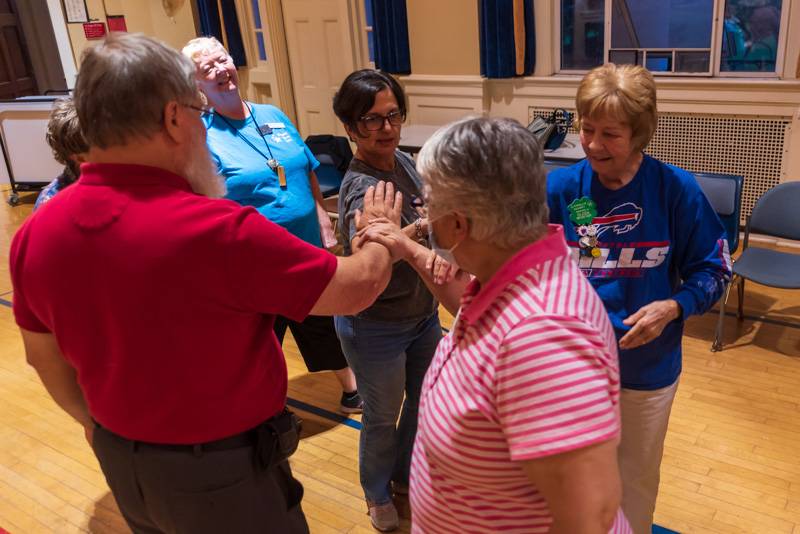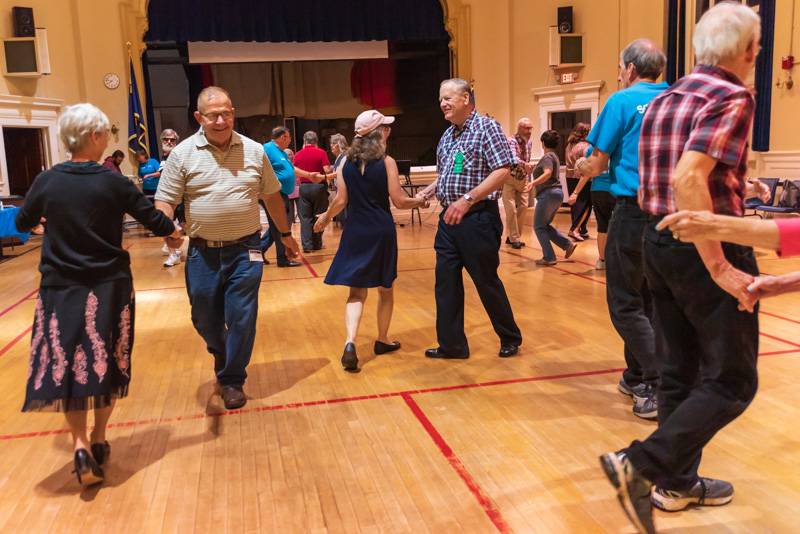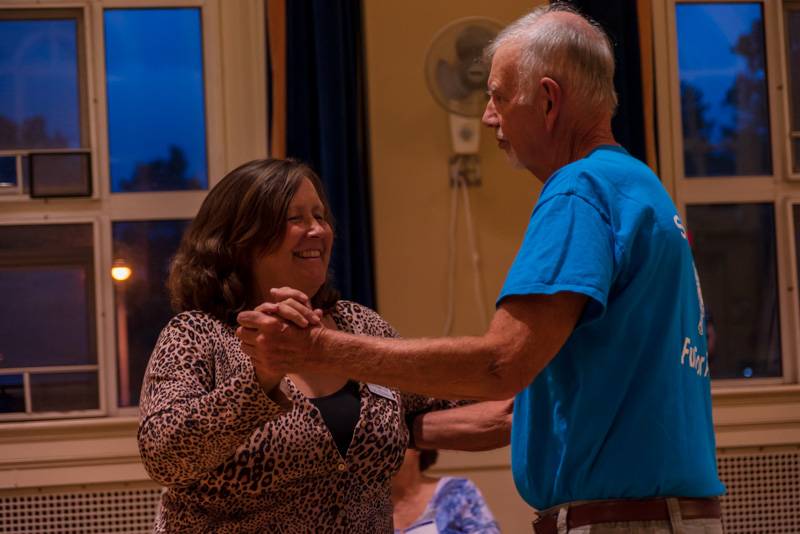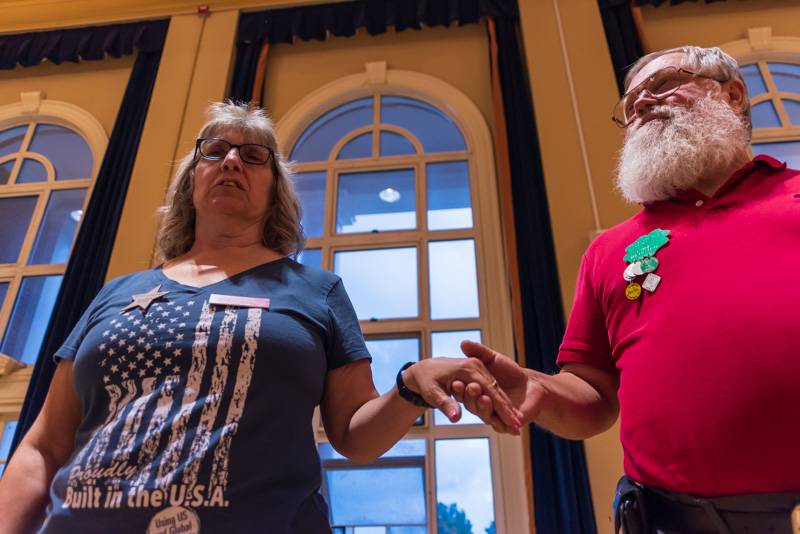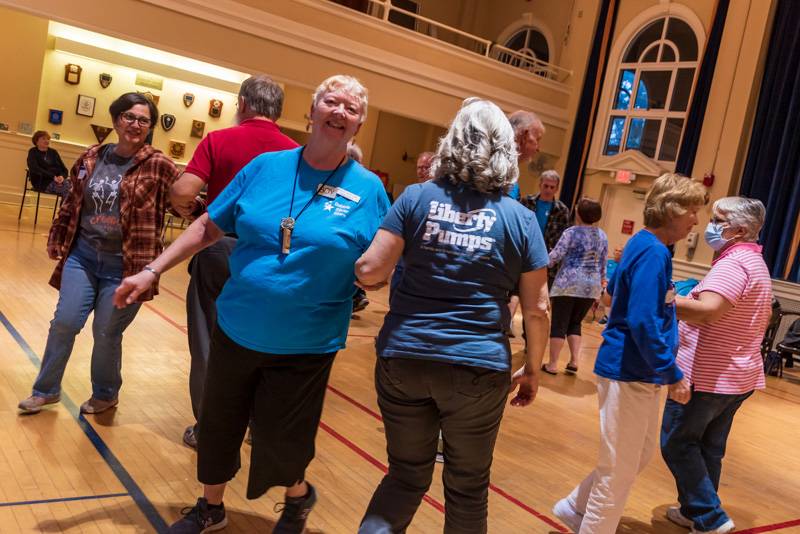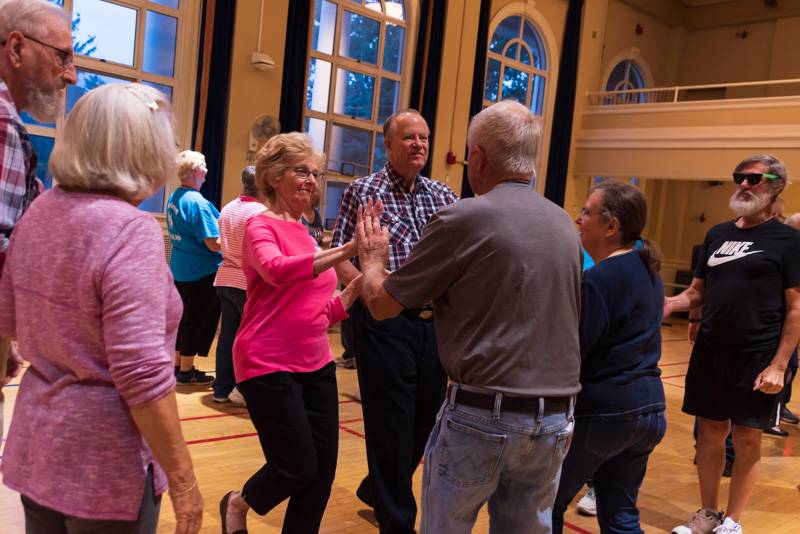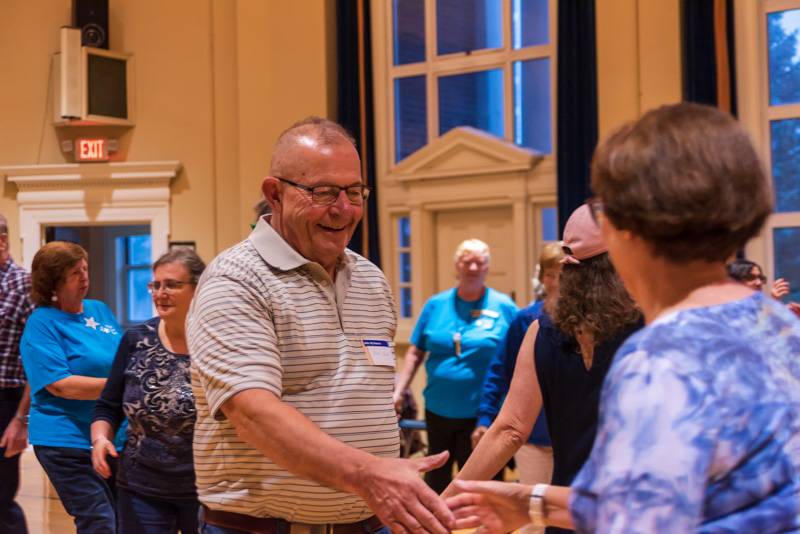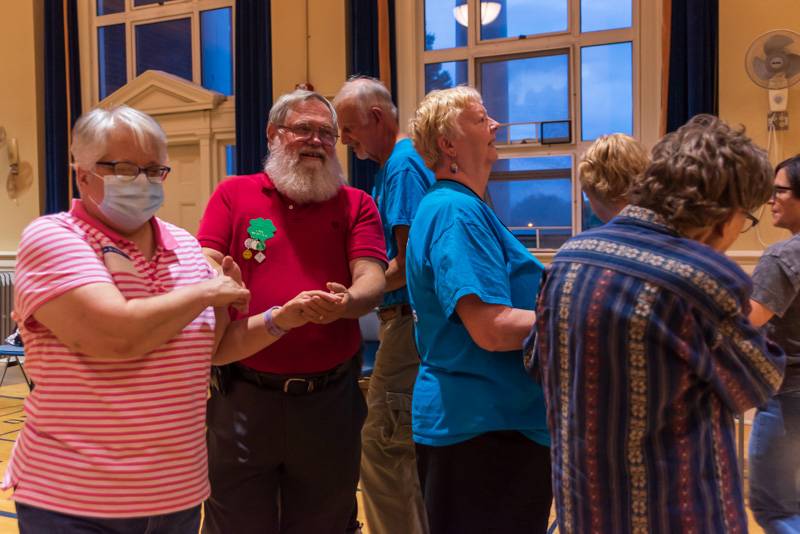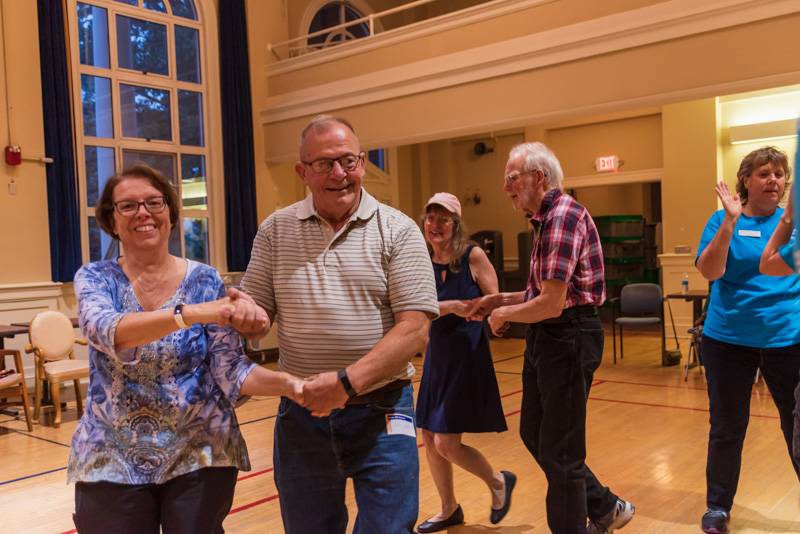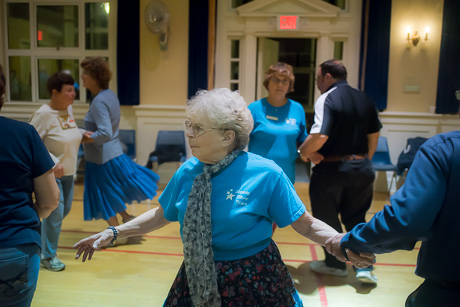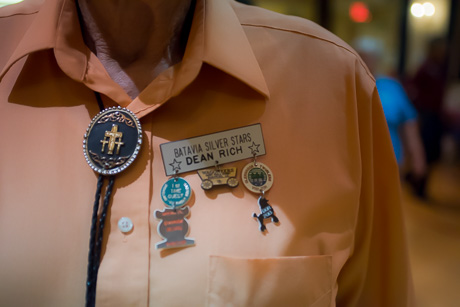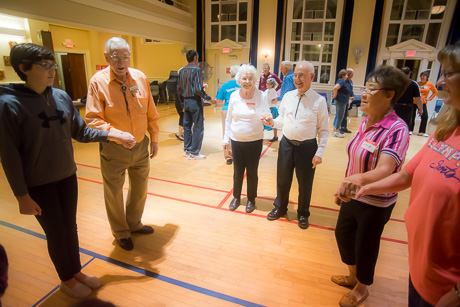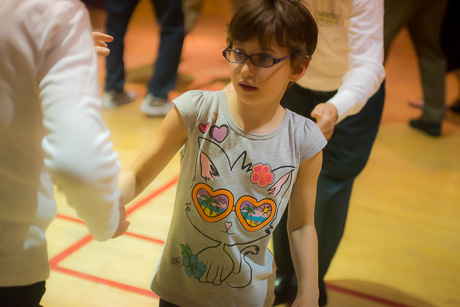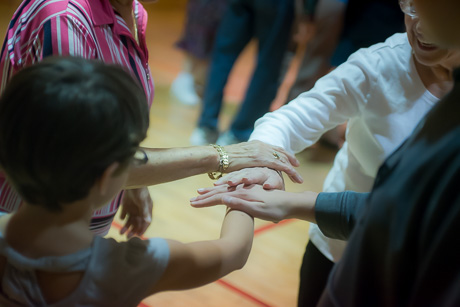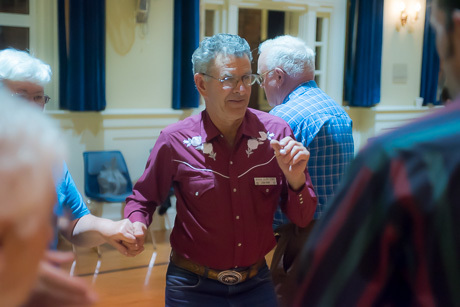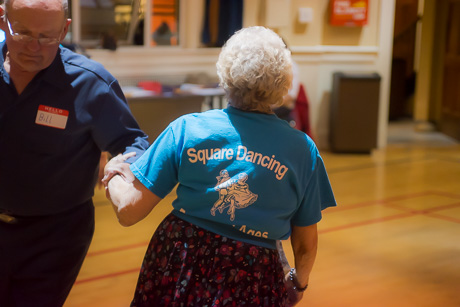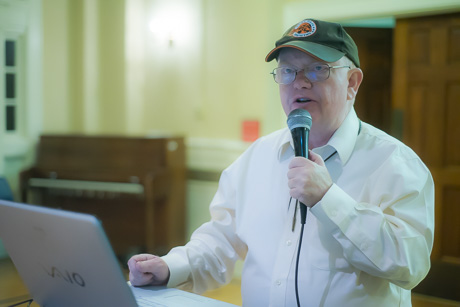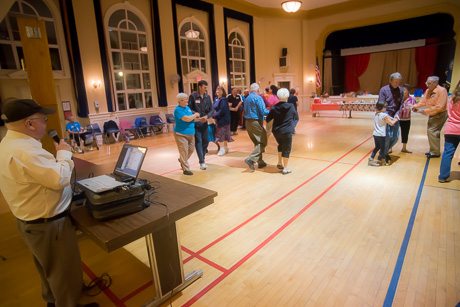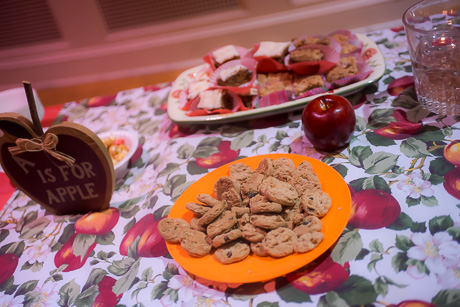Batavia Silver Stars return with new caller, new space
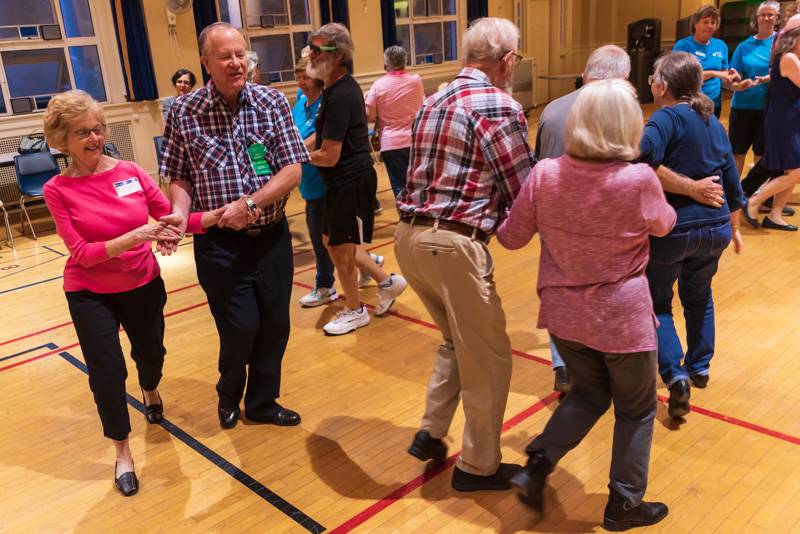
While the Batavia Silver Stars square dancing club existed for a number of years with no issues, COVID-19 restrictions put a halt to that, and the club's activities in 2020. During the long hiatus, the club's caller passed away, and members also lost the space where they held their lessons.
Not only did it take them “months and months” to find a location to hold classes, but they also had to find a new caller, member Lucy Pietrzykowski says. Yet she and fellow Silver Star dancers Joyce and Mike McNutt were determined to put the club back together and onto the dance floor.
“Traditional square dancing or eastern square dancing is what most of us learned in elementary school,” Pietrzykowski said. “What we do here is modern or western square dancing. It’s smoother, everything is choreographed nicely, but it takes a little while to learn the calls.”
While learning the calls may take a little time, Pietrzykowski said the dancing is fun and “fits everything” — the mental, physical, and emotional needs of a dancer.
Space opened up at the Veterans (VA) Medical Center, and the trio applied for use of the hall. They were mere steps away from reviving the Silver Stars.
To garner a caller, they then approached Gary Bubel, pronounced “Boo Bull,” who accepted.
“People could never pronounce my name, so a guy in one of my clubs, he was an artist, he made this big picture of Casper going ‘boo’ and the bull going ‘bull’.
“It’s part of my logo,” he said, pointing to his shirt, which is sporting Casper (the friendly ghost) riding a bull. “It was drawn up for me sometime in the early 70s when I used to travel around.”
With the venue and caller secured, the Batavia Silver Stars hosted their first get-together this month at the VA, 222 Richmond Ave., Building 4.
A little history
Square dancing originated around the 18th century and was popular at the court of Louis XV, according to Britannica.com. Europeans then brought the popular dance to America, where it was a staple in American life up to the late 1800s. By the early 1900s, square dancing began to fade from everyday life. It wasn’t until after World War II that the American folk dance saw a revival.
Dr. Lloyd (Pappy) Shaw (1890-1958), an educator for 35 years at Cheyenne Mountain School, Colorado Springs, Colorado, is credited with bringing about the broad revival of square dancing in America. During his tenure at the school - 1916-1951 - he was instrumental in bringing new school activities for the students.
According to the Lloyd Shaw Foundation, the Cheyenne Mountain Dancers toured the United States from 1939 to 1951. Interest in the old dances ran high when onlookers saw Shaw's high-school exhibition team’s enthusiastic performances. Soon after, educators and recreation leaders from around the country took a series of summer classes taught by Shaw. Subsequently, square dancing was integrated in physical education classes in American schools.
Back at the Silver Bells
“Square dancing saved my father’s best friend,” dancer Grace Peck said. “He had a heart attack, and they said the only reason why he didn’t drop dead is because of all the exercise he got from square dancing.”
Peck has been dancing on and off since she was around 12 years old. Her parents got her and her siblings into a kids club where they were dancing. She says square dancing encourages camaraderie, “friendships are built.” Getting out and getting exercise is also a benefit, she says.
Inspired by her parents, Pietrzykowski says square dancing “came along at the right time.” After living in Rochester for a number of years, she made the decision to move back to Batavia.
“I needed to redo my life,” she said. “A lot has changed since I’ve been gone.”
As she settled in, she wanted to meet new people, and she found that square dancing with the club was a good way to reacquaint herself with her hometown. She has since been square dancing for about 13 years.
An intricate part of square dancing is the caller. Dancer Joyce Jewett says in the Western style, you learn the basic calls and move up from there to more advanced calling.
The purpose of the caller is to teach the dancer the calls. Practice calls come first. This is where dancers learn the steps of a particular call. Afterward, the singing calls are where it’s all put together, says Bubel.
Bubel has been calling for more than 50 years. He got involved in the art after his in-laws said to him and his wife, “We’re going dancing.”
“At first, I was like, ‘I don't know about that one,’” he said. “But I liked it right after the first time I went, and I’ve been calling ever since.”
During the late 60s and early 70s, dancers would tape the classes, he said. Afterward, they’d gather at his home to learn the taped lessons. Because he was the one who was usually telling everyone what they were doing and explaining the calls, his sister-in-law told him he should be a caller.
While there are calling schools, Bubel learned to call by reading books on the subject.
“You have to flow and move them around the floor and get them back home to their partner,” he said. “I create what choreography I want them to do, then I call it, and then resolve it, and get them back home.
“When I started calling, I had a teenage group; four seventh-grade boys and four eighth-grade girls that wanted to learn how to dance,” he said. “We started in Caledonia, and that group then brought in four more squares the next year and by the time I was done there, I had about eight or nine squares with them.”
“Squares” are created by the placement of the dancers. Each square consists of four pairs, which create the sides of their square. In modern Western square dancing, everybody works all the time, he says. Conversely, traditional square dancing is where the number one couple would lead out to number two and so on.
Square dancing took off in 1972, but by 1976-77 it was losing its flavor with young people. Like all dances for young people, he said, it comes in as a rage, then plummets.
“We would love for the younger generation to get back involved in square dancing,” Pietrzykowski said. “At one point, there were teen clubs in the area.”
No matter one's age, the group encourages anyone to come in. If one doesn’t have a partner? No problem, nobody sits out, she said.
The basic calls are similar to what one may have learned in elementary school, circle left, circle right, do-si-do, those are the real basic calls, she says. While there may be around 60 calls, tonight, dancers will learn six to eight of them.
“I’ve read studies that say when people learn new dances, they are keeping their brain active by learning new things,” Jewett said. “They are also less likely to develop dementia or Alzheimer’s disease because dancing is not just physical. It’s mental as well. When you dance, you exercise your brain.”
Rhonda Huppe and a friend often go to bingo together. One evening, she says her friend mentions that she square dances and has been for 35 years.
“I was like, ‘I want to try it!’,” she said. “And here I am, for the past six years.”
Jan and Dave Bencic started square dancing sometime in the 90s. Although they danced when they were first married, they didn’t get back into it until their children were teenagers in high school. Outside of raising their children, Jan volunteered with her church and other organizations and Dave’s projects kept him busy around the home.
“We weren’t doing anything together,” Jan said. “So we got back into square dancing.
“We’ve met friends here that we now play cards with every weekend.”
Batavia Silver Stars is one of 12 clubs that operate under the Rochester Federation of Square Dancing.
The Silver Stars has classes on Mondays from 7-8:30 p.m. to learn the basics and from 8:30-9 p.m. for club-level dance.
Their focus is on teaching, Pietrzykowski said. In each class, there is generally an experienced dancer in each square. The “angels,” as the more advanced dancers are called, help the novice dancers learn the movements.
The first lesson is free for new dancers.
For more information about the club, visit the Batavia Silver Stars Facebook page.
Photos by Julia Ferrini.
